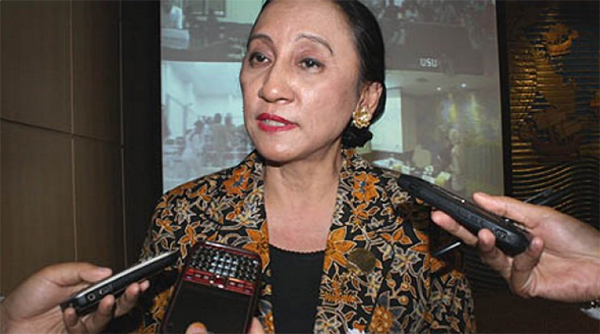NEWSLETTER
|
Indonesian Constitutional Court Fails to Give Girls Better Protection By Rosalia Maria Emanuela Sciortino
The judicial review of the proposed change to the marriageable age as stated in the 1974 Marriage Law, which was filed by the Women’s Health Foundation (Yayasan Kesehatan Perempuan or YKP) and, separately, by a coalition of five concerned women and children’s rights activists and organizations, came to an end in June.
The activists had argued for raising the minimum marriageable age for girls from 16 to 18 but their demand was rejected. Alongside changing the minimum age of marriage, other groups had demanded changes to the marriage law that would have allowed interfaith marriages and other proposed revisions.
YKP and other plaintiffs questioned the legitimacy of child marriage on various grounds. The legal argument centered on the unconstitutionality of a marriage law that is seen as violating individual rights as defined in the 1945 Constitution and as discriminating against girls by setting a different minimum age of marriage for boys.
Inconsistencies with other laws were also pointed out, foremost with Law 23/2002 on child protection, which defines a child as being below 18 while the marriage law uses 16 as an acceptable age for marriage. In 2010, 40 percent of brides were in the 15 to19 age group and almost 5 percent in the 10 to14 age group. These exceptions were allowed based on parental request and permission from religious leaders.
At the international level, the age clause in the marriage law contravenes the 1979 Convention to Eliminate All Forms of Discrimination against Women, ratified by Indonesia.
The negative socio-economic effects of marriage at such a young age were also pointed out by plaintiff experts, who brought in evidence to the Constitutional Court showing that early marriages were born out of destitution and perpetuated a vicious circle of inter-generational poverty, in which already vulnerable brides were deprived of educational and economic opportunities for them and their children.
Elevated risks of unwanted pregnancies, sexual diseases, maternal health hazards and violence were also discussed, and the importance of postponing marriage to protect girls and their physical and mental well-being was stressed. This view was also supported by most religious leaders called to testify, with the well-known Muslim scholar Alwi Shihab stating that the economic, physical and mental maturity of the girl was seen as vital in Islam to a successful marriage and a harmonious family—a stand that countered interpretations previously provided by representatives of Muslim organizations in court.
Yet the court dismissed the plaintiffs’ arguments as well as their evidence, even minimizing the negative implications of early marriages. The final decision stressed the individual right to marriage of each individual and stated that a change to the minimum age of marriage was not warranted since there “was no guarantee that with increasing the age from 16 to 18 there will be a reduction of divorce rates, health improvements and reduction of other social problems”.
It further argued that to set a fixed age would restrict the state in developing policies adequate to the times and advised the plaintiffs to initiate a legislative review to establish a new minimum age for girl brides.
Of little consolation was the dissenting voice of Maria Farida Indrati, the only woman on the nine-member constitutional judge panel who supported the plaintiffs. She concluded that the current compulsory age was indeed unconstitutional as it violated child rights, especially of girls, and it contravened Article 6 of the marriage law requiring a display of free will before entering into a union.
In her view, early marriage required urgent legal attention because it compromised the development and health of the child bride. Rather than recommending a lengthy legislative review process, the Constitutional Court should act, employing “law as a tool of social engineering” to bring about much needed societal change.
It is very important to stress judge Maria’s last point. By opting for legalistic excuses rather than substantial arguments, the Constitutional Court has missed an opportunity to eliminate or at least reduce one of the most obvious forms of gender inequity in Indonesia.
Although legal reform is only part of the solution, changing the discriminatory clause would have contributed to a favorable environment for a comprehensive approach to address the root causes of early marriages.
Women’s groups, civil society, media and other concerned groups will continue to work with even greater commitment to abolish child marriages through other venues, including addressing poverty, fostering access to education, promoting sexual and reproductive health education and raising awareness among parents, local governments, religious leaders, judges and legal experts.
The court could have endorsed their important work and, most important, made a statement about the importance of girls achieving their full potential, but instead it failed to protect them and jeopardized their future contribution to the nation.
The writer is a social development expert. She worked for the Ford Foundation in its Manila and Jakarta offices from 1993 to 2000 and was later Southeast Asia Regional Director for the Rockefeller Foundation and for the International Development Research Centre. She now is an associate professor at Mahidol University and a visiting professor at Chulalongkorn University, both in Bangkok.
|


